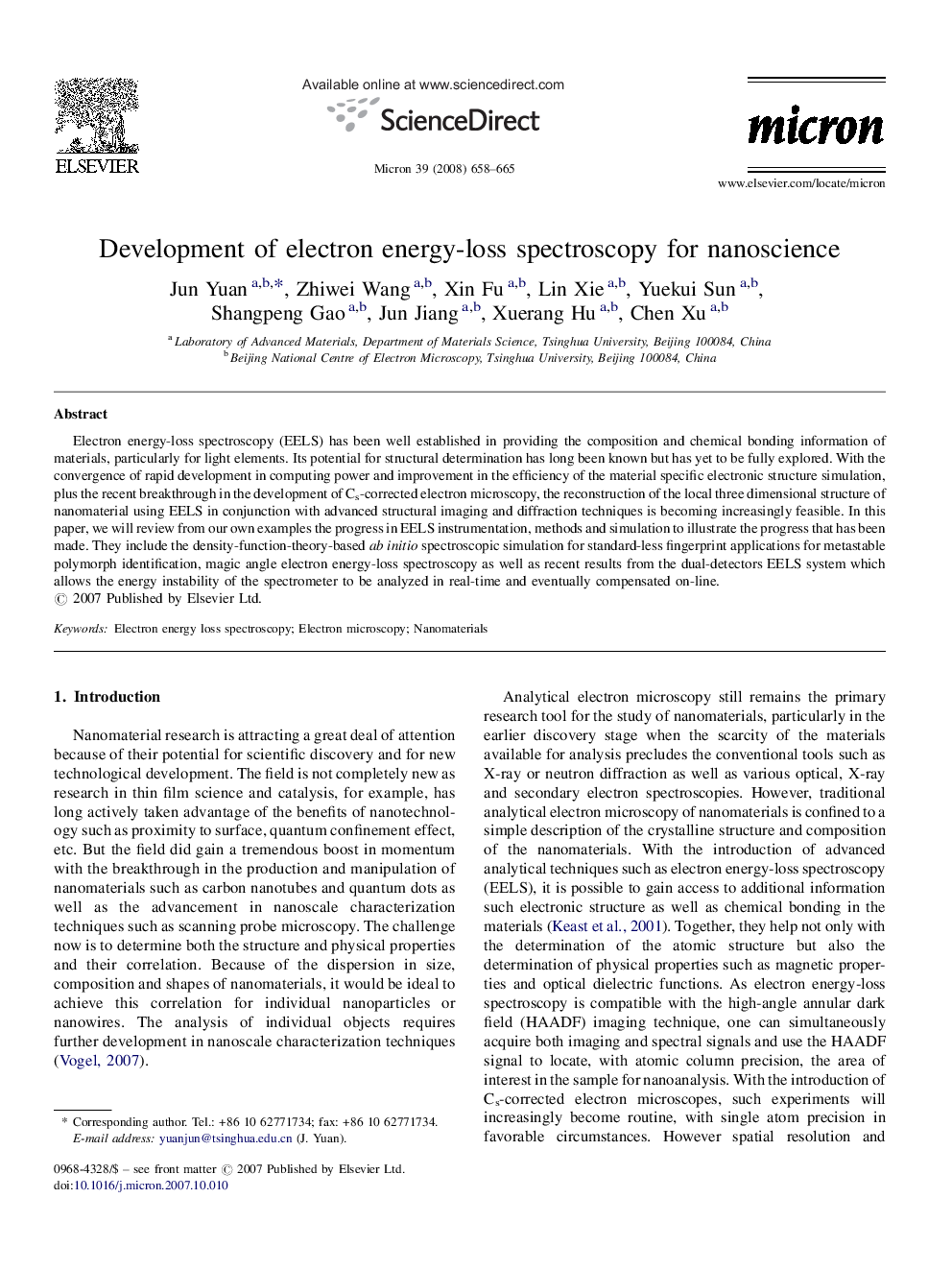| Article ID | Journal | Published Year | Pages | File Type |
|---|---|---|---|---|
| 1589952 | Micron | 2008 | 8 Pages |
Abstract
Electron energy-loss spectroscopy (EELS) has been well established in providing the composition and chemical bonding information of materials, particularly for light elements. Its potential for structural determination has long been known but has yet to be fully explored. With the convergence of rapid development in computing power and improvement in the efficiency of the material specific electronic structure simulation, plus the recent breakthrough in the development of Cs-corrected electron microscopy, the reconstruction of the local three dimensional structure of nanomaterial using EELS in conjunction with advanced structural imaging and diffraction techniques is becoming increasingly feasible. In this paper, we will review from our own examples the progress in EELS instrumentation, methods and simulation to illustrate the progress that has been made. They include the density-function-theory-based ab initio spectroscopic simulation for standard-less fingerprint applications for metastable polymorph identification, magic angle electron energy-loss spectroscopy as well as recent results from the dual-detectors EELS system which allows the energy instability of the spectrometer to be analyzed in real-time and eventually compensated on-line.
Related Topics
Physical Sciences and Engineering
Materials Science
Materials Science (General)
Authors
Jun Yuan, Zhiwei Wang, Xin Fu, Lin Xie, Yuekui Sun, Shangpeng Gao, Jun Jiang, Xuerang Hu, Chen Xu,
